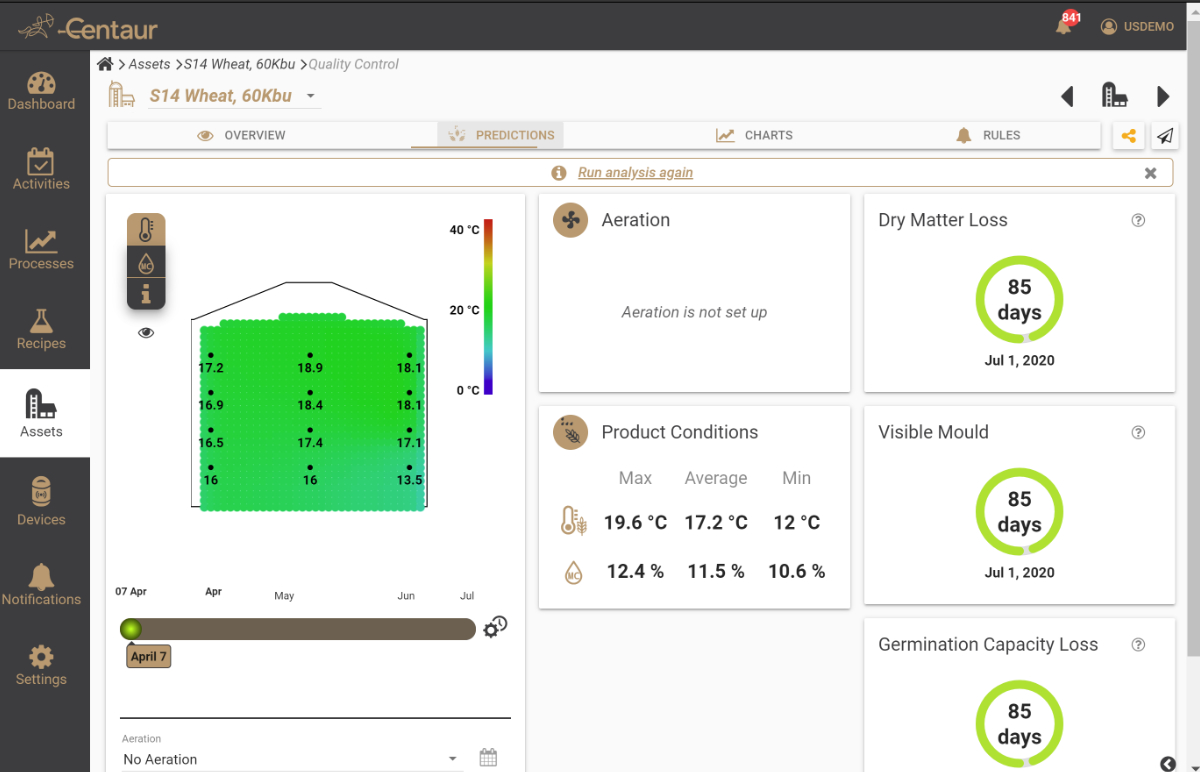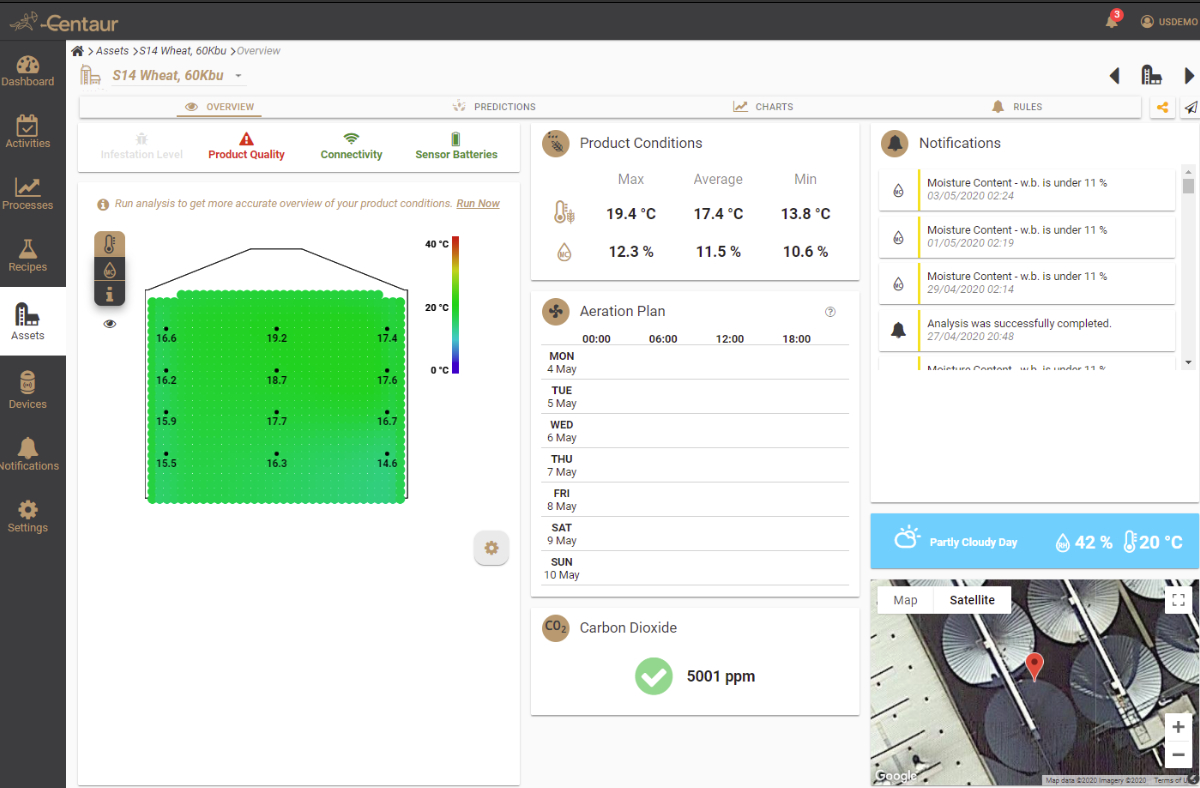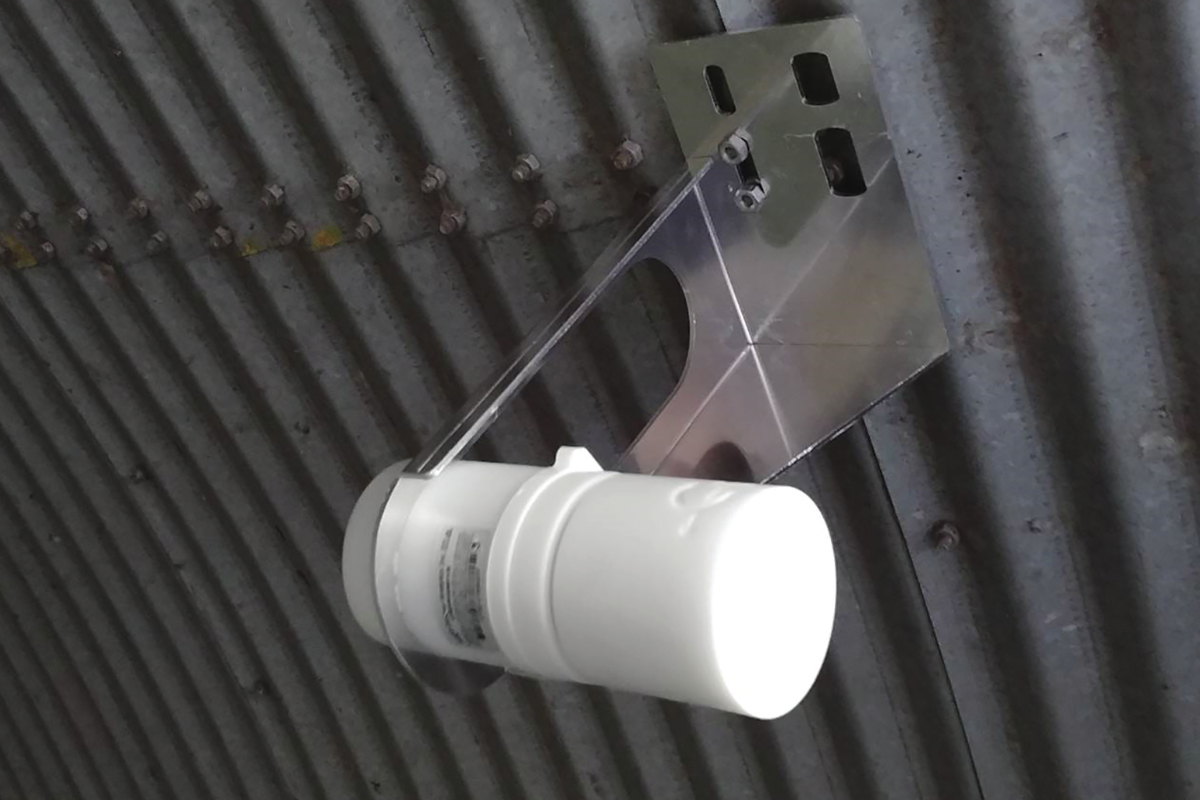Grain management in silos is a complex task aiming to maintain high crop quality and reduce losses. Therefore, it is important to monitor grain condition since high moisture and warm temperatures allow the rapid growth of insects, fungi and the possible production of mycotoxins. Furthermore, grain deterioration is related to the evolution of carbon dioxide due to the respiration of the grain itself and of the accompanying microorganisms.
New technologies, both in hardware (wireless sensors) and software (Artificial Intelligence and Machine Learning methodologies), are now available to transform the monitoring process and assist the storage manager in managing grain in an efficient, proactive and safe manner.
New trends in sensor technology
Recent advancements in grain storage technology enabled the development of wireless sensors (photos on page 74) that monitor accurately all the parameters relevant to grain quality (e.g. temperature, relative humidity, O2 and CO2) and fumigation processes (e.g. phosphine). Their advantages include low installation costs since no advanced expertise is required and lower mechanical stability risks to the silo as no high-strength steel cables attached to the roof are necessary. Additionally, they can move with the grain, in case of grain transit, offering enhanced traceability.

Monitoring and predicting grain quality
For most silo managers, knowing the grain moisture content is of crucial importance. Wireless sensors could effectively tackle this task by providing a real-time monitoring system for grain moisture content based on equilibrium moisture models.
Advance numerical software based on the Computational Fluid Dynamics (CFD) approach and Machine Learning methods can extend the monitor capabilities and forecast the grain status. These methods can evaluate sensor data, heat transfer effects that originate from the heat produced from grain respiration, the heating of the silo due to solar radiation, as well as the cooling due to wind effects.
Additionally, they implement equations predicting the variations of grain moisture content and the two gases involved in grain respiration (combustion of a carbohydrate), O2 and CO2. Furthermore, models evaluating grain deterioration are integrated into the software. These models offer predictions of safe storage time based on losses in grain dry matter, the possibility of mold appearance and the reduction of germination capacity.

Gas concentration monitoring
Monitoring gases in a silo offer significant advantages to early spoilage detection, particularly the ones that are associated with grain respiration, mold and insect development (e.g. CO2). Furthermore, variations in gas concentrations move 100 times faster than variations in temperature and relative humidity. Nonetheless, the evaluation of the CO2 readings is not straightforward and Machine Learning algorithms are required to extract useful and actionable information. Increase of the CO2 concentration does not trigger an alert in all cases. For example, we have silo A with grain of elevated moisture and temperature. A sudden small rise of the CO2 prescribes an unstable condition. We have silo B with grain of low moisture and temperature. A higher CO2 concentration is recorded but the algorithm doesn’t issue an alert since the grain condition is deemed good.

Monitoring grain movements
It is vital for silo managers to be able to monitor the quantity of the available product. For grain silos, a fill level sensor is commonly used. A fill level sensor is a contactless radar system that measures the distance between the sensor (usually mounted on the silo roof) and the grain surface accurately.
To translate the measured distance to total grain mass stored one should consider the following variables:
- Grain bulk density (varies with moisture content).
- Pack factor (varies with grain height).
- Grain surface shape (varies with the operation: loading, emptying).
The real-time monitoring of the product quantity in a silo includes an advanced algorithm that considers the above parameters and translates the distance measured by the fill level sensor to accurate calculations of the grain mass and volume. Monitoring grain in real time with precision supports a unique traceability system.

Phosphine fumigations monitoring
Traditional methods of monitoring systems for fumigation applications employ toxic gas sensors that use suction. These kinds of sensors are bulky, hard to use, have low sample frequency and often involve human interaction making them prone to human error.
Advances in technology now permit their replacement by wireless sensors, such as the ones developed by Centaur Analytics. An importance of precisely monitoring a fumigation is the fluctuation of the phosphine concentration. The fumigant concentration fluctuates between night and day, sometimes dropping below the protocol threshold. This fluctuation is missed if we sample only once per day.
Another difficulty faced by fumigators is that phosphine gas is not distributed uniformly throughout the stored product. A new mathematical model can utilize the constant feedback from wireless sensors, so that phosphine concentration can be determined for every location inside the storage volume and at any given time, assessing all the factors that occasionally affect the toxicity of the fumigant and prevent treatments from being successful:
- The degassing rate of metal phosphides like Mg3P2, AlP which depends on temperature and relative humidity values.
- Weather conditions to evaluate accurately the storage interaction with its surroundings in terms of heat transfer, gas leakage and movement.
- Absorption of phosphine gas by grain at differing rates depending on the commodity that can reduce the concentrations of fumigation doses to sublethal levels before grain has been disinfected.
- Insect species and resistance.
Benefits
The adoption of the new technologies described in this article could transform the silo monitoring process bringing unprecedented benefits:
- Mitigation and prevention of crop spoilage and enhanced market value.
- Supply chain transparency and defensibility against claims from consumers.
- Cost reduction of pest control applications, avoiding excessive use of chemicals (e.g. overdosing, need to repeat failed fumigations).
- 100% safe operation and monitoring for the fumigator.
- Improved decision making based on real-time and accurate silo inventory system.
- Sustainability benefits thanks to offsets in energy and carbon emissions, chemicals, product loss and improvements in food safety.






